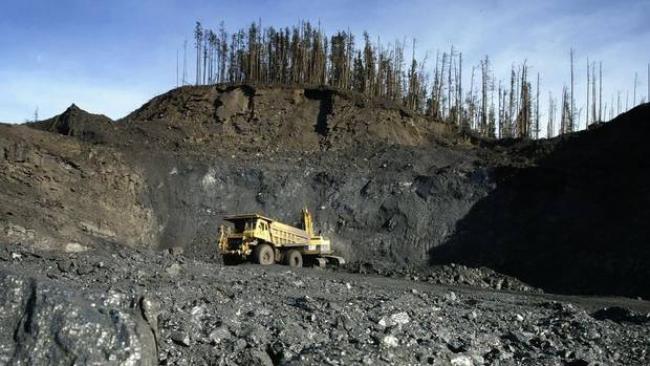Articles Menu

The Blueberry River First Nations has released an atlas showing that more than 80 per cent of its traditional territory – which overlies a large part of B.C.’s northeast oil and gas field – has been negatively affected by development.
“Fracking, forestry, roads and other development is pushing us further and further to the edges of our territory,” Chief Marvin Yahey said Tuesday.
“Our way of life, our very way of existence is being wiped out … our hunting, our camping, our fishing and cultural camps have been overrun by industry,” he said at a news conference in Vancouver.
The BRFN claims a traditional territory that covers 38,000 square kilometres in the Peace River region near Fort St. John.
Mr. Yahey said fracking operations, which draw huge amounts of water from area lakes and rivers, have exacerbated drought in the region, while logging, road building and pipeline construction have damaged wildlife habitat, leading to a collapse of caribou and moose populations.
“My elders are very, very worried about the future of our youth … they fear we are going extinct next, our way of life,” he said. “It seems like the walls are closing in.”
The BRFN first documented cumulative impact in an atlas produced in 2012, but the updated version shows that since then the government has authorized the construction of more than 2,600 new oil and gas wells and the building of 1,500 kilometres of pipelines in the area.
In an e-mail, Aboriginal Relations and Reconciliation Minister John Rustad said he is aware of the BRFN concerns and the government is trying to address them with existing programs.
“We recognize the importance of assessing, monitoring and managing the cumulative effects of resource development and have developed a cumulative effects framework that is being applied in northeast British Columbia,” he stated.
“The framework provides policy, procedures and tools to improve the consideration of cumulative effects in natural resource decision-making. We also regulate all industries with rigorous environmental standards, and have programs in place to protect critical habitat for wildlife and water resources, and to ensure our air is clean.”
He said the government is trying to get the BRFN involved in a regional environmental assessment program that some other Treaty 8 First Nations are already engaged in.
“Several attempts have been made to get Blueberry River First Nations involved,” Mr. Rustad stated.
In 2015, the BRFN started a civil action hoping to slow the pace of development, arguing that under Treaty 8, which was signed in 1900, its members were promised they could continue their traditional way of life in exchange for opening the land to settlement. The BRFN is concerned that irreparable damage will have been done both to the environment and the band’s way of life before the legal dispute is decided.
Mr. Yahey said hunting and trapping have become increasingly difficult and now people have to travel a long way from their communities to find game.
“My family trap line is a good example … it’s like a desert [because of logging],” he said. “Prime hunting areas, cultural sites [have been] wiped out [by development]. It’s frustrating as a leader to see this right before your eyes.”
The atlas, which was compiled for the band by the David Suzuki Foundation and Ecotrust Canada using provincial government data, shows that development has continued unabated in the region despite calls by the BRFN for restraint.
The band has asked the provincial government to work with it on a joint land management plan and to halt development in some key areas, Mr. Yahey said, but there has been no agreement.
“We’ve asked for suspension of all operations in our core critical areas,” he said. “This has not happened.”
Mr. Yahey said on Tuesday the BRFN presented the government with a detailed “land stewardship framework” that proposes policy changes to better protect the environment while allowing development to take place.
“We’re not against development. We want to be part of that plan. We want to be part of the solution,” he said.
The Canadian Association of Petroleum Producers declined immediate comment, saying the matter is best dealt with by government.
[Top photo: The Pine Valley open pit coal mine in the Peace River district of northeastern B.C., shown in 2005. Chief Marvin Yahey says resource industry development has negatively affected the Blueberry River First Nations' traditional territory, which overlies a large part of B.C.’s northeast oil and gas field.
(John Lehmann/The Globe and Mail)]